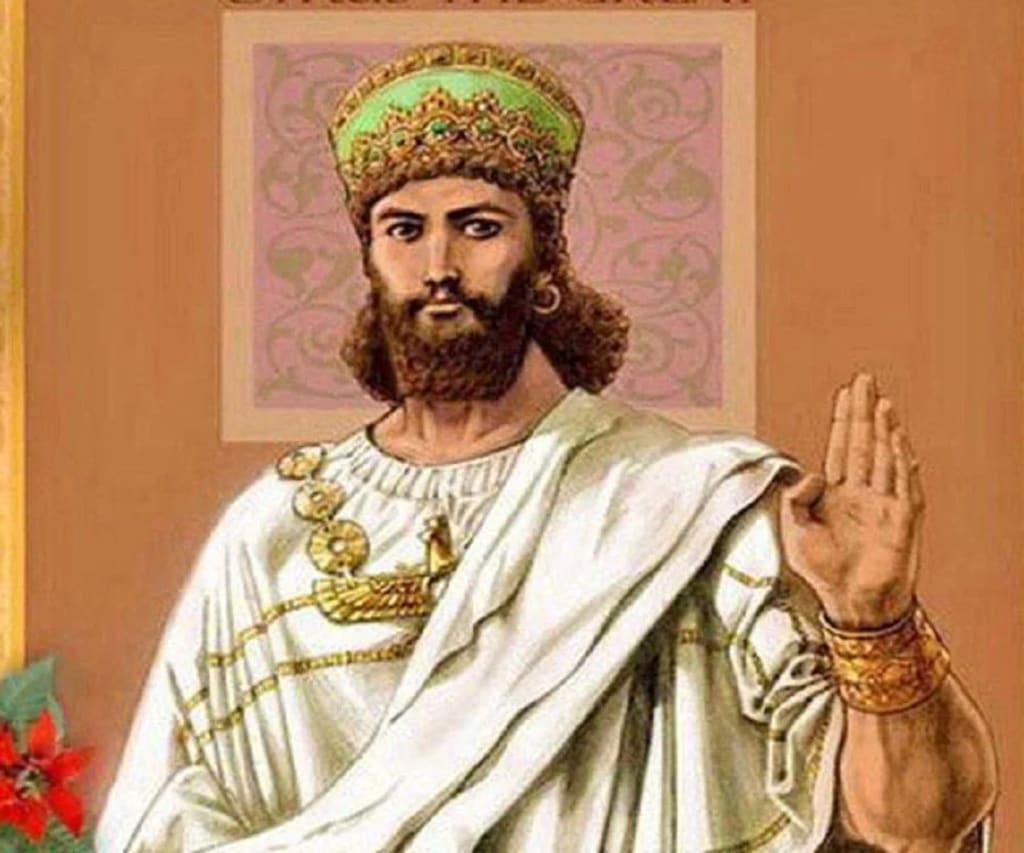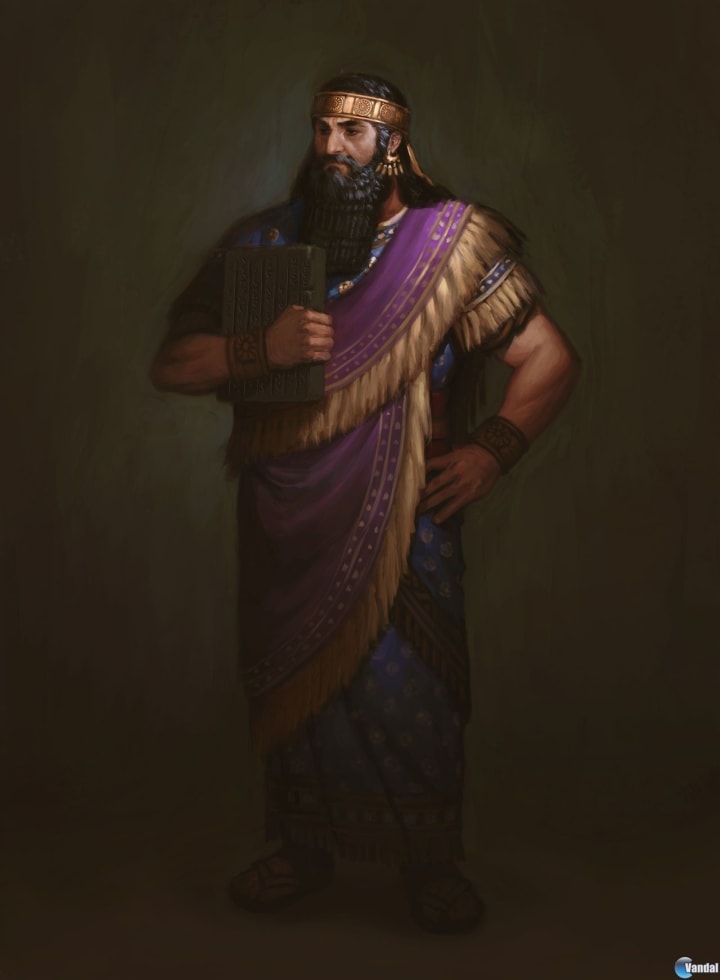Cyrus The Great
Was Cyrus The Great really that's GREAT?

Cyrus the Great established the first Persian Empire. Take a deeper look at one of the most significant characters in Near Eastern history. Cyrus the Great (600-530 BC) founded the Achaemenid Empire, often known as the first Persian Empire. At the time of his death, he had constructed the world's greatest empire, reaching from the Mediterranean Sea to the Indus River. Cyrus the Great is also known for his contributions to religion, human rights, philosophy, and literature, as well as for establishing a stable governmental structure to govern his enormous kingdom.
Click here to see the full video.

Facts and Fiction About Cyrus the Great
As with any figure of great grandeur, there are numerous tales and stories surrounding Cyrus the Great's life. However, in certain circumstances, the truth is stranger than fiction. The Cyropaedia, written by Xenophon (430-354 BC), a Greek historian, general, and pupil of Socrates, is one of the primary texts that narrates Cyrus' life. This book, which is a combination of political romance and historical fiction, depicts Cyrus as the ultimate king. The Greek historian Herodotus (484-425 BC), known as the "Father of History," is another major source. His book, The Histories, has been heavily attacked for what appear to be imaginative narratives that many feel were made up for amusement purposes. The Babylonians also wrote a number of chronicles, such as the Nabonidus Chronicle, but they are exceedingly fragmentary. The eventual effect is that reconstructing Cyrus the Great's history is challenging. Many specifics remain vague, and we are sometimes forced to rely on myths and stories, some of which are explicitly classified as such in the texts that chronicle them. Nonetheless, Cyrus the Great had a huge impact on the history of the Ancient World and is still revered to this day.
Click here to see the full video.

Early Years
Cyrus the Great's early life is steeped in myth and mystery. He was the son of Cambyses, King of the Persians, and the grandson of Astyages, King of the Median Empire. He was born around 600 BC. According to tradition, Astyages was forewarned in a series of prophetic visions that Cyrus would displace and murder him one day. Astyages sent his senior commander, Harpagus, to kill the boy, but Harpagus had Cyrus kidnapped and taken to live as a shepherd. Cyrus came to Astyages' attention at the age of eleven by whipping the son of a nobleman who refused to heed his commands. Astyages uncovered what had transpired after interrogating the youngster and his adoptive parents. Cyrus was returned to his parents, but Harpagus' son was executed and fed to his father at a feast in retaliation. Other versions identify Cyrus as the son of a humble Median family who lived at Astyages' court before being restored to his parents. Cyrus married Cassandane, an Achaemenian and his great love, sometime after his return.
Click here to see the full video.

Taking down the Medes
When Cyrus the Great took the throne in 559 BC, he was one of several minor kings who pledged loyalty to the powerful Median Empire. The Median Empire was still controlled by Cyrus' grandfather Astyages at the time, but it is unknown how and why hostilities erupted. Harpagus was in command of Astyages' army when it attacked Cyrus. According to tradition, Harpagus had cause to despise Astyages and persuaded Cyrus to revolt. Harpagus then deserted to Cyrus, bringing with him half of his army. The Persians captured the Median capital of Ecbatana after a three-year struggle against the Medes (553-550 BC). Cyrus spared Astyages' life and married Amytis, one of his daughters, pacifying the Medes' former vassals, the Bactrians, Parthians, and Saka. Cyrus was able to unite the Persian people by conquering Media and establishing himself as their ruler.
Click here to see the full video.

Cyrus the Great vs. Croesus of Lydia
Croesus, the notoriously rich king of Lydia, assaulted a Persian-controlled city in central Anatolia around 547 BC. Cyrus the Great led his army against the Lydians, and the two sides fought to a draw, after which Croesus retreated to gather friends as the normal campaigning season was coming to a close. Cyrus, on the other hand, persisted and besieged the Lydian capital of Sardis. When Croesus marched out to combat again, Harpagus instructed Cyrus to deploy his camels in front of his army since the strange look, noises, and smell of the animals would make the Lydian cavalry horses flee. Cyrus took Harpagus' instructions and seized Croesus and routed his men in the next battle. Rather than murdering his former adversary, Cyrus saved his life and appointed him as an adviser. When Cyrus started his return march to Persia, the Lydians took Croesus' immense wealth, recruited mercenaries, and rose in revolt. Two of Cyrus' generals were despatched to deal with the problem. They controlled the rest of Anatolia after defeating the insurrection, adding Ionia, Lycia, Cilicia, and Phoenicia to the Persian Empire.
Click here to see the full video.

Babylon's Liberation
Cyrus the Great conquered the kingdom of Elam in eastern Mesopotamia in 540 BC, expanding his empire to border the Neo-Babylonian Empire. At the period, the Neo-Babylonian Empire was headed by Nabonidus, who came to power in a coup and subsequently clashed with the strong priests of Marduk, one of Babylon's primary gods. As a result of these and other actions, Nabonidus was exceedingly unpopular among the Babylonians, who saw Cyrus the Great as a potential liberator. Cyrus invaded Babylonia in 539 BC and crushed the Babylonian army in a quick fight on the Euphrates River's banks. As Cyrus reached the city of Babylon, Nabonidus fled. Babylon was one of the greatest cities in the Ancient Near East, with a massive population and formidable defenses. The Persians took the city by diverting the Euphrates into a nearby canal, allowing them to wade through the river bed at night and invade the city. Thus, Babylon surrendered without a struggle, and Cyrus stopped his forces from sacking the city. Soon after, Nabonidus submitted, and Cyrus seized control of all of Mesopotamia, Syria, and the Levant. His vast empire has grown to become the world's largest.
Click here to see the full video.

Death and Entombment
Later, Cyrus the Great clashed with the Massagetae, a nomadic confederation in Central Asia. Cyrus initially offered marriage to the Massagetae queen, Tomyris, but was turned down. In retaliation, Cyrus invaded the Massagetae's realm, and the two sides fought in combat. Although the specifics are unknown, it appears that the Persian army was defeated and he was murdered. According to one story, Cyrus' body was taken before Tomyris after the fight and decapitated. She then dipped the head in a vessel of blood, a symbolic act of vengeance because Cyrus was alleged to have murdered her son previously via trickery. After Cyrus the Great died, sometime around 530-529 BC, his remains were interred in his capital city of Pasargadae. Though the city is now in ruins, the tomb itself has survived. Made of limestone, it consists of a quadrangular base, followed by a pyramidal succession of smaller levels. The structure is curtailed by an edifice, with an arched roof composed of a pyramidal shaped stone, and a small opening or window on the side. Within the tomb Cyrus the Great was buried in a golden coffin, resting on a table with golden supports. According to the sources the tomb was filled with other luxurious items, and was surrounded by a beautiful garden.
Click here to see the full video.

Cyrus the Great's Achievements
Apart from becoming a conqueror, Cyrus the Great is known for a variety of other accomplishments. Many consider him an early proponent of human rights. Following his defeat of the Neo Babylonian Empire, he issued an order documented on the Cyrus Cylinder that restored all temples and religious rituals while also enabling many displaced peoples to return to their homes. This approach is mentioned in two books of the Bible and is linked to the liberation of the Jews from Babylonian captivity. Cyrus adopted a policy of religious tolerance across his realm. His smart policies have been revered and followed by monarchs, politicians, and philosophers throughout history. Cyrus established a series of satrapies, or administrative areas governed by satraps with wide powers, to govern his enormous empire. They were linked to the central authority through the creation of an effective postal and transportation system. He was also a creative builder who combined methods from around the empire. Cyrus formed the Achaemenid army's most famous force, the 10,000-strong Immortals. Many people across history and space have properly admired Cyrus the Great, often known as the Father of his People.
Click here to see the full video.

About the Creator
Father of History
Welcome to Father of History!
Your mind-blowing History channel!
All about History and Mythology in one place.
Our goal is to create educational resources that will make people love history and mythology.






Comments
There are no comments for this story
Be the first to respond and start the conversation.